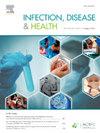Analysis of infection prevention and control documentation in residential aged care based on a behaviour specification framework
IF 2
Q2 PUBLIC, ENVIRONMENTAL & OCCUPATIONAL HEALTH
引用次数: 0
Abstract
Background
Clear specification of desired behaviour within evidence-based guidelines and policies might make them more actionable, i.e. increase the likelihood that those behaviours will take place in practice. It was our expectation that the level of specificity in such documents would be higher, i.e. more detailed, at the organisational level compared with the national level, given that local documents are developed for a specific setting and workforce. This study aimed to compare infection prevention and control (IPC) behaviours and their specificity in a national guideline with local residential aged care policies and procedures.
Methods
The document analysis was informed by the Action, Actor, Context, Target and Time (AACTT) framework. The Australian Guidelines for the Prevention and Control of Infection in Healthcare and the local policies and procedures of eight residential aged care providers were investigated.
Results
There was some overlap between behaviours in the national guideline and local policies and procedures. However, of the 63 behavioural statements in the guideline relating to hand hygiene and appropriate use of gloves and masks, only eight statements were mentioned by all residential aged care providers. Twelve statements were mentioned in the local policies and procedures but not mentioned in the guideline and two statements mentioned locally seemed to conflict with the guideline. IPC statements were generally not well specified in either the national guideline or local documents.
Conclusion
Local policies and procedures should be more aligned with national guidelines to reflect the evidence base. Once this alignment is in place, attention should be given to increasing the specificity and actionability of these documents.
基于行为规范框架的养老院感染预防与控制文件分析。
背景:在以证据为基础的准则和政策中明确规定期望的行为可能使它们更具可操作性,即增加这些行为在实践中发生的可能性。由于地方文件是为特定的环境和工作人员编制的,我们期望这些文件的具体程度在组织一级比国家一级更高,即更详细。本研究旨在比较国家指南中感染预防和控制(IPC)行为及其特异性与地方老年护理政策和程序。方法:采用行动、行为人、情境、目标和时间(AACTT)框架进行文献分析。调查了澳大利亚预防和控制医疗保健感染指南以及当地八家住院老年护理提供者的政策和程序。结果:国家指南与地方政策和程序的行为存在一些重叠。然而,在指引中有关手部卫生和适当使用手套及口罩的63项行为声明中,所有安老院舍提供者只提及8项声明。12项声明在当地政策和程序中提到,但在指南中没有提到,当地提到的2项声明似乎与指南相冲突。在国家指南或地方文件中,IPC声明通常没有得到很好的规定。结论:地方政策和程序应与国家指南更加一致,以反映证据基础。一旦这种一致性到位,应注意增加这些文件的特殊性和可操作性。
本文章由计算机程序翻译,如有差异,请以英文原文为准。
求助全文
约1分钟内获得全文
求助全文
来源期刊

Infection Disease & Health
PUBLIC, ENVIRONMENTAL & OCCUPATIONAL HEALTH-
CiteScore
5.70
自引率
5.70%
发文量
40
审稿时长
20 days
期刊介绍:
The journal aims to be a platform for the publication and dissemination of knowledge in the area of infection and disease causing infection in humans. The journal is quarterly and publishes research, reviews, concise communications, commentary and other articles concerned with infection and disease affecting the health of an individual, organisation or population. The original and important articles in the journal investigate, report or discuss infection prevention and control; clinical, social, epidemiological or public health aspects of infectious disease; policy and planning for the control of infections; zoonoses; and vaccination related to disease in human health. Infection, Disease & Health provides a platform for the publication and dissemination of original knowledge at the nexus of the areas infection, Disease and health in a One Health context. One Health recognizes that the health of people is connected to the health of animals and the environment. One Health encourages and advances the collaborative efforts of multiple disciplines-working locally, nationally, and globally-to achieve the best health for people, animals, and our environment. This approach is fundamental because 6 out of every 10 infectious diseases in humans are zoonotic, or spread from animals. We would be expected to report or discuss infection prevention and control; clinical, social, epidemiological or public health aspects of infectious disease; policy and planning for the control of infections; zoonosis; and vaccination related to disease in human health. The Journal seeks to bring together knowledge from all specialties involved in infection research and clinical practice, and present the best work in this ever-changing field. The audience of the journal includes researchers, clinicians, health workers and public policy professionals concerned with infection, disease and health.
 求助内容:
求助内容: 应助结果提醒方式:
应助结果提醒方式:


